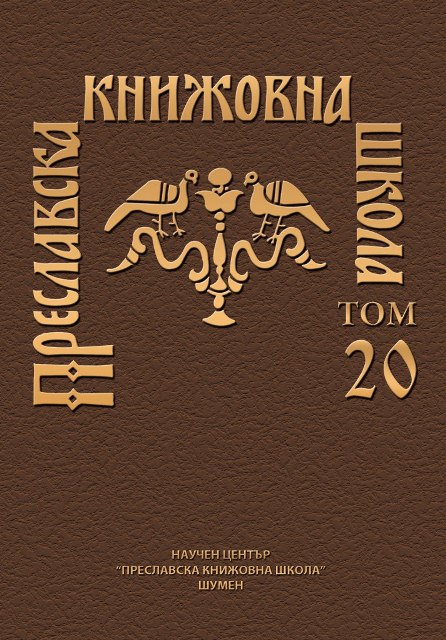БРОНЗОВ АМУЛЕТ С НАДПИСИ ОТ ОКОЛНОСТИТЕ НА ПЛИСКА
BRONZE AMULET WITH INSCRIPTIONS FROM THE VICINITY OF PLISKA
Author(s): Stela Doncheva, Nikolay NikolovSubject(s): History, Archaeology, Cultural history, Middle Ages, 6th to 12th Centuries
Published by: Шуменски университет »Епископ Константин Преславски«
Keywords: Bronze amulet; Pliska; the XIth century
Summary/Abstract: The desire to protect oneself from danger with the help of various magical means is characteristic of beliefs in all historical eras. Of particular interest is the spell formula "hysteria". Applied to numerous monuments, the formula reflects the idea of the boundless metamorphosis of impure power and the defilement of evil in its various manifestations. This group of monuments is also referred to as the present monument (Fig. 1). It is a bronze thin plate with an oval shape and an ear hook at the upper end, now broken. Dimensions: length - 2.9 cm, width - 2.6 cm, ear - 0.5 cm, thickness - 0.05 cm. On one side is a schematic representation of the Gorgon with 12 snakes. On the other side is a schematic representation of the Virgin Orans. Below the figure is a three-line inscription, which is inverted and starts from the bottom of the amulet to complete the image of the Mother of God. The inscription is written in Greek letters and has the following form: ΦΗΟС (K) - ОΦНС K (ὄφις); ОФΥΛΑТН - OΦΥΛΑΤΗ (οφγλατή); ΥТЄРНAΚ - ΥTЄPНАΚ (υτερηακ); ὄφις οφγλατή υτερηακ; „dragon, protector of the womb“. The symbolic magic formula is aimed at Hysteria - the womb and its protection against chthonic forces. The directional image of the Virgin Orans to the inscription has a symbolic meaning - the protective prayer is made by the Mother of God herself. This gives even greater strength to faith in the protective role of both the Virgin and the well-established image of the Gorgon. These types of amulets are generally determined in the X-XIIth century, which is confirmed by the rings and lead amulets found in Corinth. Within the chronological boundaries of the XIth century, we must include the present amulet not only because of the images, but also in view of its location - in the vicinity of Pliska, where the most moving monuments of this period have been found.
Journal: Преславска книжовна школа
- Issue Year: 2020
- Issue No: 20
- Page Range: 94-101
- Page Count: 8
- Language: Bulgarian

